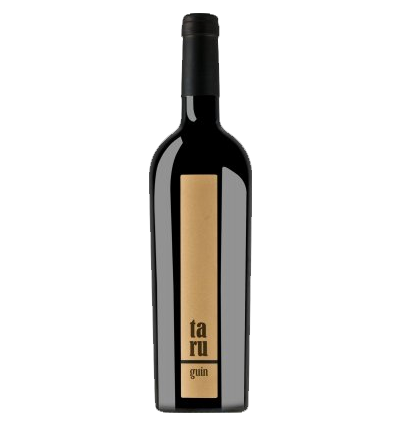

ZONA – REGION
VIÑEDOS – VINEYARD
ELABORACIÓN – ELABORATION
VINO – WINE
TIENDA – SHOP
CONTACTO – CONTACT
SÍGUENOS – FOLLOW US

“A shorter and thicker piece of wood cut from a larger one.”
ZONA – REGIÓN
En la zona más oriental de la Ribera del Duero (Soria), a una gran altitud nos encontramos viejos majuelos (pequeñas plantaciones de viñedo) donde subsisten esforzadamente sus inquebrantables plantas. La climatología viene marcada por un clima continental extremo, con muy pocas lluvias, un largo y gélido invierno, y un verano corto y extremo también.
Estas condiciones derivan en que las plantas requieran de un largo periodo de maduración al final del cual se ven sometidas a una gran diferencia térmica noche-día, que ayuda a mantener una atractiva intensidad aromática en los vinos, y los dota de taninos bien maduros. Así mismo, este clima favorece la implementación de una agricultura sostenible con el medioambiente.
In the eastern area of Ribera del Duero (Soria), close where Duero River begins, at a great altitude of its valley, close to a thousand meters above sea level, there are still vineyard at these really tough conditions. It does not rain too much even in autumn, and it is very cold in the winter.
That conditions help us to develop an ecological viticulture. The weeks before the harvest, which are fundamental to its state of maturity, typically have wide ranging variances between day and night, that help the wines are guaranteed an aromatic intensity and matured tannins.
VIÑEDOS – VINEYARDS
En la zona predominan los terrenos calcáreos, con suelos de diferente composición y profundidad de suelo. La roca calcárea que existe en profundidad aporta mineralidad a sus vinos, e impide que las raíces profundicen excesivamente. La composición del mismo es variable entre la arena, arcilla o piedras.
Empezamos a recuperar nuestro viñedo en el año 2010.
Nuestro viñedo viejo fue plantado en un terroir singular compuesto por una capa superior con textura arenosa sobre otra de roca caliza; dispone de una leve pendiente y exposición al sur, lo que favorece para que la planta culmine su maduración. Los vientos predominantes vienen del este, lo que sumado a la altitud (908 metros sobre el nivel del mar), hacen que la uva alcance un perfecto equilibrio, con una frescura que permite a los vinos expresar un carácter varietal muy amable. La mayoría de las plantas son de la variedad Tinta del País, pero también hay una pequeña proporción de la variedad Albillo, uvas que también incorporamos a la elaboración.
In the area, the common characteristic of the soils is the calcareous rock found at a depth and that provide the grapes its mineral qualities, while impeding the roots from reaching deeper layers.
We have begun working in our old vines in 2010.
The Old Vines were plant in a terroir with a topsoil of sand although the bed is made-up of rock, its exposure, and its south orientation and, allows the plant to have a great maturation. But the winds that comes from the east, and the altitude (908 meters above the sea), give us the perfect balance for getting a fresh and varietal wines very pleasant. In the Vineyards, there are mostly Tinta del País plants, but there are also some Albillo plants that we used too.
ELABORACIÓN – WINEMAKING
Nuestra primera elaboración fue con la uva de la vendimia 2011, y desde entonces hemos seguido una política de fermentación y crianza basada en el principio de mínima intervención, y respeto a la variedad y el origen.
Desarrollamos la fermentación pequeños depósitos de tan solo 1500 litros de capacidad, reducida capacidad que nos permite no tener que emplear ningún tipo de sistema para el control de la temperatura. Nuestra mayor obsesión ha de ser estar encima de todos los detalles y tratar de escuchar lo que éste nos está demandando. Introducimos el vino resultante en barricas de roble francés antes de caer el invierno.
Durante los primeros meses de crianza sobre lías, el vino es sometido a frecuentes battonages. La estancia total del vino en barrica tiene una duración media de en torno a 9 meses, tras los que el vino es embotellado y permanece con nosotros al menos otros 9 meses antes de salir al mercado.
Our first fermentation was 2011 since then our winemaking politic is based in minimal intervention and respect to raw material.
The fermentation is done in small 1500 liters tanks that allow us to control the temperature of the must-wine without the need without the use of energy. The main effort is to pay attention to the details and to listen to the requests of the wine, instinctively. We rack the wine into the barrels before winter falls.
During the first months of the cask aging process, we work with natural lees selected during the fermentation. Later, we continue selecting the lees, and racking the wine for a natural cleaning process. The wine aged nine months in oak casks, then the wine is bottled and spend with us at least 9 month in bottles ageing in our cellar.
VINOS – WINES
Taruguín 2018
Variedades/Grapes: 95% Tinto Fino, 5% Albillo
Alcohol: 14.43%
Acidez Volátil/Volatile acidity: 0.63 g/l
Acidez Total: 5.80 g/l ác. tartárico
pH: 3.71
Sulfuroso: 50 mg
Azúcares: < 1.5 g/l
Ácido Málico: 0.10 g/l
Embotellado/Bottled: 06/2020
Botellas/Bottles: 3.674 (75cl.) / 100 mágnums
Ficha técnica: Taruguín 2018 (PDF)
Histórico: 2017 – 2016 – 2015 – 2014 – 2013 – 2012 – 2011
Corral de Taruguín 2018
Variedades/Grapes: 98% Tinto Fino, 2% Albillo
Alcohol: 14.76%
Acidez Volátil/Volatile acidity: 0.69 g/l
Acidez Total: 6.10 g/l ác. tartárico
pH: 3.62
Sulfuroso: 54 mg
Azúcares: < 1.5 g/l
Ácido Málico: < 0.10 g/l
Embotellado/Bottled: 08/2020
Botellas/Bottles: 887 (75cl.)
Ficha técnica: Corral de Taruguín 2018 (PDF)
CONTACTO – CONTACT
VINO TARUGUIN S.L.
Ver en google Maps
Polígono Industrial de la Tapiada.
Vivero de empresas, Nave 3
42330 San Esteban de Gormaz
SORIA – SPAIN
